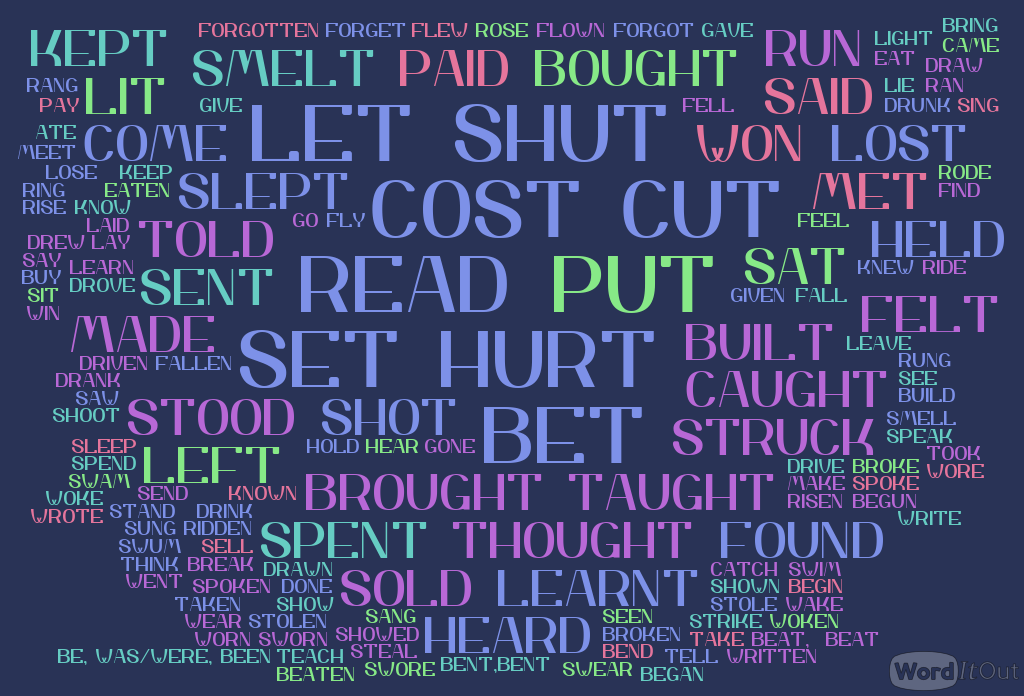Master list
Activity 11: Vocabulary
This list contains of the important technical terms related to time and tense. The terms are grouped by the unit in which they were introduced.
Work alone, in pairs or groups. Describe, explain and provide examples for each of these terms.
- repetition
- predictability
- pattern
- random
- apophenia
- Rorschach test
- orthographical
- phonetic
- phonological
- semantic
- morphological
- lexical
- grammatical
- syntactical
- discoursal
- pragmatic
- situational
- functional
- verb types
- lexical verbs
- auxiliary verbs
- modal auxiliary verbs
- finiteness
- finite verbs
- non-finite verbs
- tense
- present tense
- past tense
- aspect
- perfect aspect
- progressive aspect
- future aspect
- voice
- passive voice
- active voice
- transitivity
- intransitive
- transitive
- agreement
- subject-verb agreement
- vowel
- consonant
- monovowel
- diphthong
- short vowel
- long vowel
- word stress
- sentence stress
- grammatical intonation
- attitudinal intonation
- falling intonation
- rising intonation
- collocation
- cohesion
- coherence
- literal character
- metacharacter
- match
- capture
- greedy
- ungreedy
- anchors
- assertions
- natural language processing (NLP)
- NLP pipeline
- part-of-speech (POS) tagging
- POS tagset
- dependency parsing
- parse tree
- NLP Compromise
- Natural Language Tool Kit (NLTK)
 Awareness and defense
Awareness and defense
 Blitz speaking
Blitz speaking
 Interview practice
Interview practice
 Professional development
Professional development



